MCAT Physics and Math - Data-Based and Statistical Reasoning
1/56
Earn XP
Description and Tags
691
Name | Mastery | Learn | Test | Matching | Spaced |
|---|
No study sessions yet.
57 Terms
Measures of central tendency
describe the middle(s) of a sample
mean / (arithmetic) average
calculated by adding up all of the individual values within the data set and dividing the result by the number of values
where xi to xn are the values of all of the data points in the set and n is the number of data points in the set
good indicator of central tendency when all of the values tend to be fairly close to one another

outlier
extremely large or extremely small value compared to the other data values
median
midpoint, where half of data points are greater than the value and half are smaller; data set must first be listed in increasing fashion
where n is the number of data values
least susceptible to outliers, but may not be useful for data sets with very large ranges or multiple modes

mode
the number that appears the most often in a set of data; may be multiple, one or none; represented graphically as peaks; not directly used as measure of central tendency but relationships can be enlightening
normal distribution / bell curve
mean = median = mode
68% of the distribution is within one standard deviation of the mean, 95% within two, and 99% within three
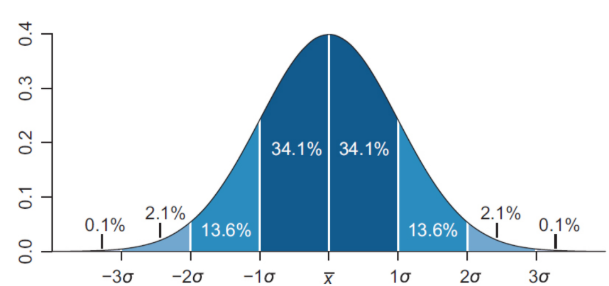
standard distribution
mean of zero and a standard deviation of one, can be extrapolated from any normal distribution
skewed distribution
one that contains a tail on one side or the other of the data set; visual shift in the data appear opposite the direction of the skew
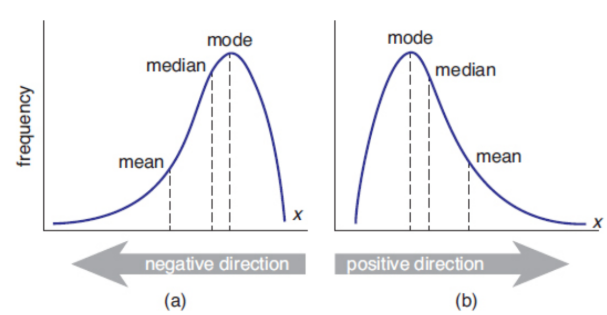
negative skew
tail to left
mean < median < mode
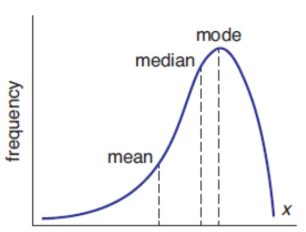
positive skew
tail to right
mode < median < mean
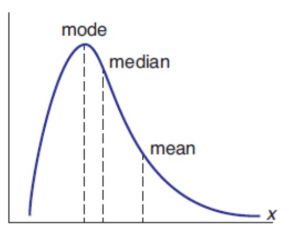
bimodal
distribution containing two peaks with a valley in between; might have only one mode if one peak is slightly higher than the other; can often be analyzed as two separate distribution
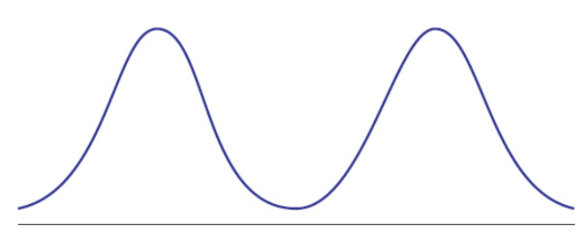
range
difference between its largest and smallest values; does not consider the number of items of the data set, nor the placement of any measures of central tendency; possible to approximate the standard deviation as one-fourth
range = xmax − xmin
Quartiles
divide data (when placed in ascending order) into groups that comprise one-fourth of the entire set
Calculate quartiles
To calculate the position of the first quartile (Q1) in a set of data sorted in ascending order, multiply n by ¼.
median (Q2)
To calculate the position of the third quartile (Q3), multiply the value of n by ¾.
If this is a whole number, the quartile is the mean of the value at this position and the next highest position.
If this is a decimal, round up to the next whole number, and take that as the quartile position.
Interquartile range
calculated by subtracting the value of the first quartile from the value of the third quartile
IQR = Q3 – Q1
outlier
Any value that falls more than 1.5 interquartile ranges below the first quartile or above the third quartile OR that lies more than three standard deviations from the mean
may be: true statistical anomaly, measurement error, distribution that is not approximated by the normal distribution
Standard deviation
calculated by taking the difference between each data point and the mean, squaring this value, dividing the sum of all of these squared values by the number of points in the data set minus one, and then taking the square root of the result
where σ is the standard deviation, xi to xn are the values of all of the data points in the set, is the mean, and n is the number of data points in the set.

independent events
have no effect on one another
Dependent events
have an impact on one another, such that the order changes the probability
Mutually exclusive outcomes
cannot occur at the same time
exhaustive
there are no other possible outcomes
probability of two or more independent events
product of their probabilities alone
P(A ∩ B) = P(A and B) = P(A) × P(B)
probability of at least one of two independent events
equal to the sum of their initial probabilities, minus the probability that they will both occur.
P(A ∪ B) = P(A or B) = P(A) + P(B) − P(A and B)
Hypothesis testing
begins with an idea about what may be different between two populations
null hypothesis
always a hypothesis of equivalence; says that two populations are equal, or that a single population can be described by a parameter equal to a given value
alternative hypothesis
a hypothesis contrary to the null hypothesis
nondirectional
alternative hypothesis that the populations are not equal
directional
alternative hypothesis that the mean of population A is greater than the mean of population B
z- or t-tests
most common hypothesis tests which rely on the standard distribution or the closely related t-distribution
test statistic
calculated and compared to a table to determine the likelihood that that statistic was obtained by random chance
p-value
the likelihood that that statistic was obtained by random chance under the assumption that our null hypothesis is true
significance level (α)
comparison of p-value; 0.05 is commonly used
p-value > α, fail to reject the null hypothesis - not a statistically significant difference between the two populations
p-value < α, reject the null hypothesis - there is a statistically significant difference between the two groups
type I error
the likelihood that we report a difference between two populations when one does not actually exist; probability is α; false positive
type II error
incorrectly fail to reject the null hypothesis; probability is β; false negative
power
The probability of correctly rejecting a false null hypothesis; equal to 1 − β
confidence
probability of correctly failing to reject a true null hypothesis
Results of Hypothesis Testing

Confidence intervals
essentially the reverse of hypothesis testing; determine a range of values from the sample mean and standard deviation
Charts
present information in a visual format and are frequently used for categorical data
Pie / circle charts
used to represent relative amounts of entities and are especially popular in demographics; may be labeled with raw numerical values or with percent values
as the number of represented categories increases, the visual representation loses impact and becomes confusing
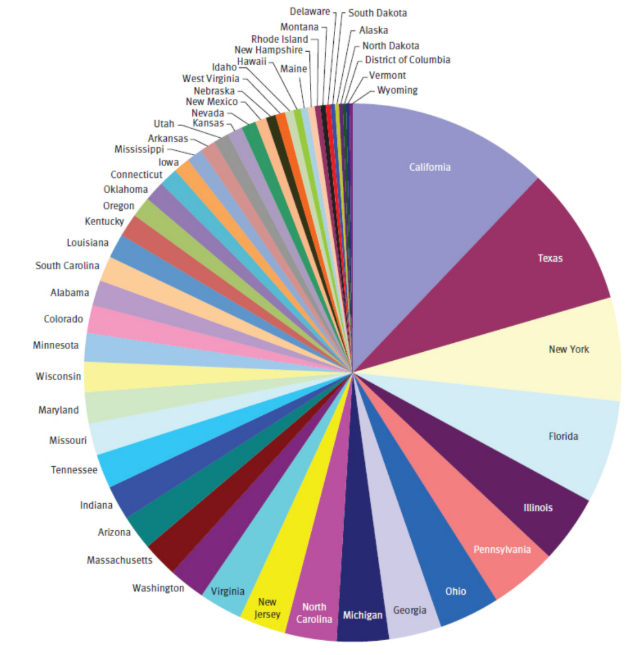
Bar charts
used for categorical data, which sort data points based on predetermined categories; may then be sorted by increasing or decreasing bar length; length of a bar is generally proportional to the value it represents
breaks should be avoided in the chart because of the potential to distort scale
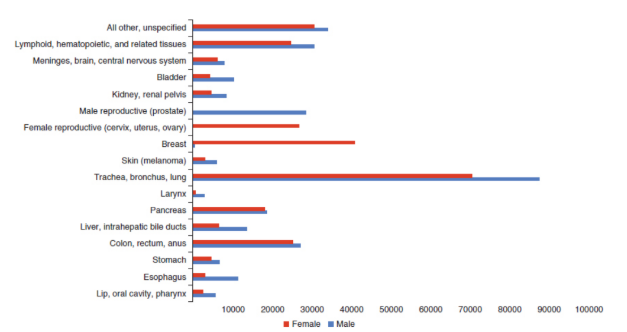
Histograms
present numerical data rather than discrete categories; particularly useful for determining the mode of a data set because they are used to display the distribution of a data set
Box plots
used to show the range, median, quartiles and outliers for a set of data
box-and-whisker
a labeled box plot; box is bounded by Q1 and Q3; Q2 is the line in the middle of the box; ends of the whiskers correspond to maximum and minimum values of the data set
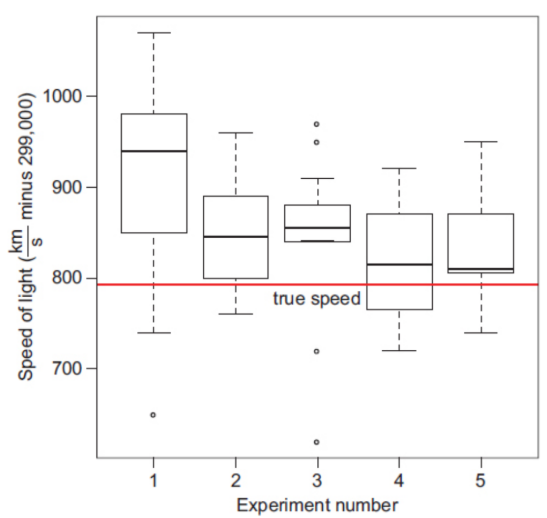
Maps
data can be illustrated geographically; relatively easy to comprehend and may show geographic clustering for some data
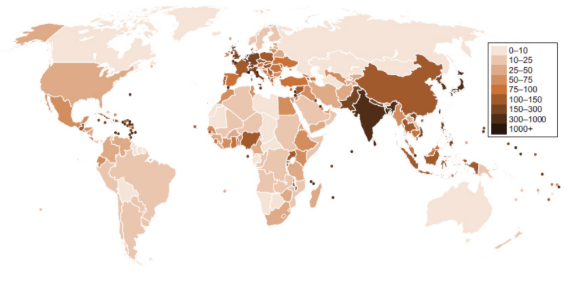
Linear graphs
show the relationships between two variables; curve may be linear, parabolic, exponential, or logarithmic; axes of a linear graph will be consistent in the sense that each unit will occupy the same amount of space
linear shape graph
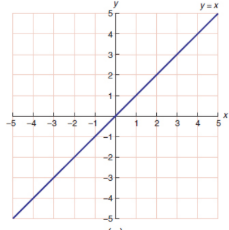
Parabolic graph
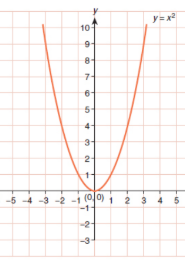
Exponential graph
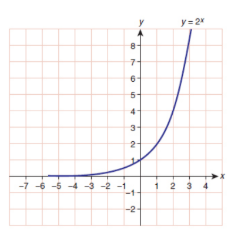
Logarithmic graph

Slope (m)
change in the y-direction divided by the change in the x-direction for any two points

Semilog graphs
specialized representation of a logarithmic data set; curved nature of the logarithmic data is made linear by a change in the axis ratio
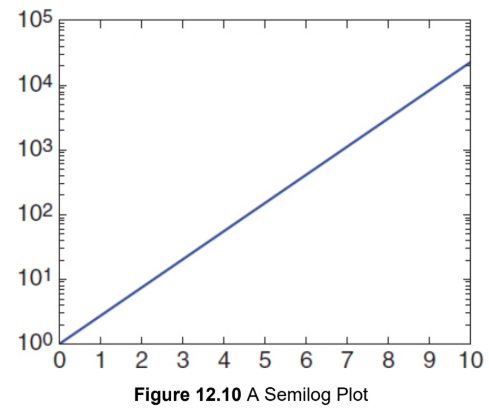
axis ratio
spacing based on a ratio, usually 10, 100, 1000, and so on
Tables
more likely to contain disjointed information than either charts or graphs because they often contain categorical data or experimental results; significant organization is likely to be relevant; should be able to convert it to a rough graph or to a linear equation
Correlation
a connection—direct relationship, inverse relationship, or otherwise—between data
correlation coefficient
number between –1 and +1 that represents the strength and direction of the relationship
+1 = strong positive relationship
–1 = strong negative relationship
0 = no apparent relationship
causation
manipulation of one variable is the reason for an effect in another